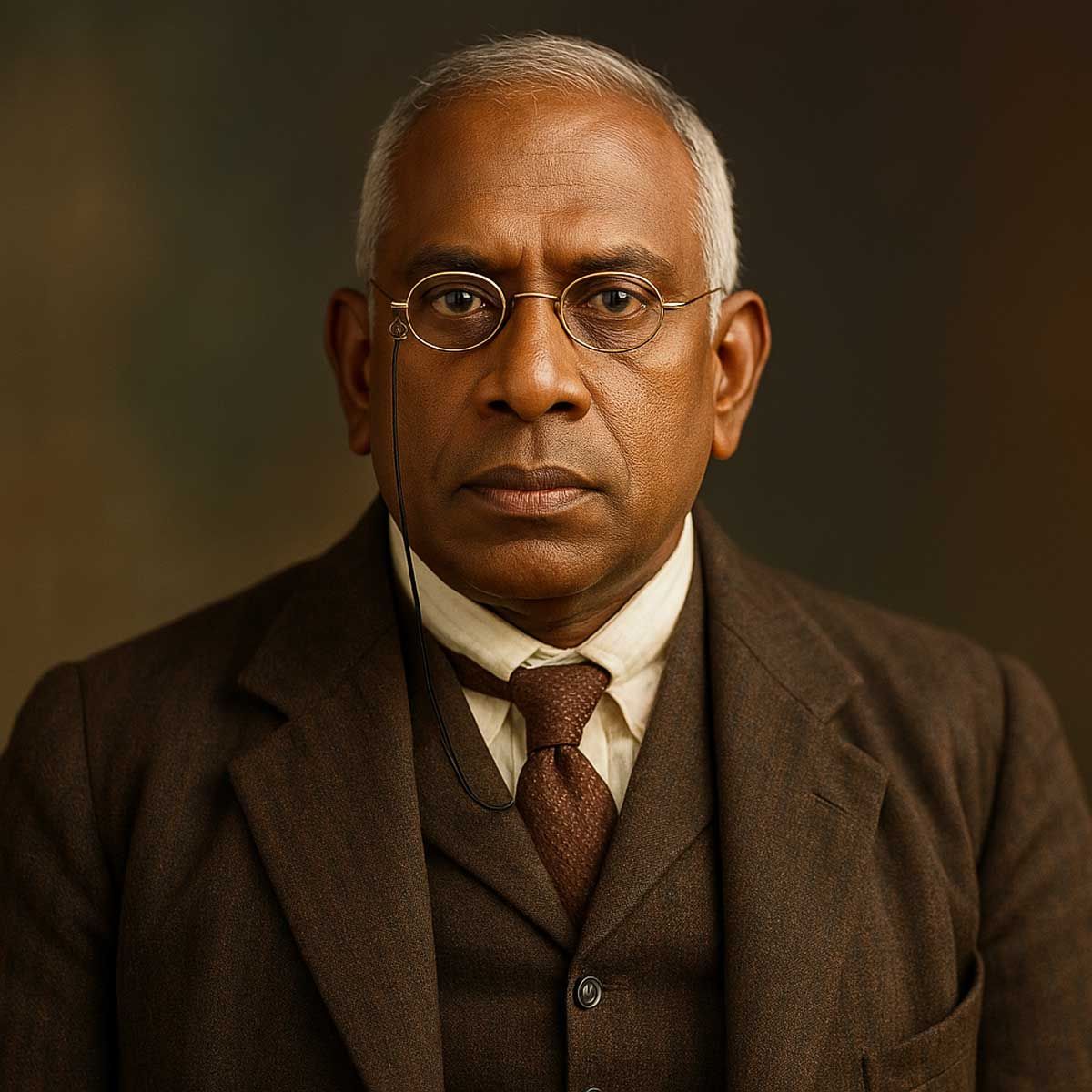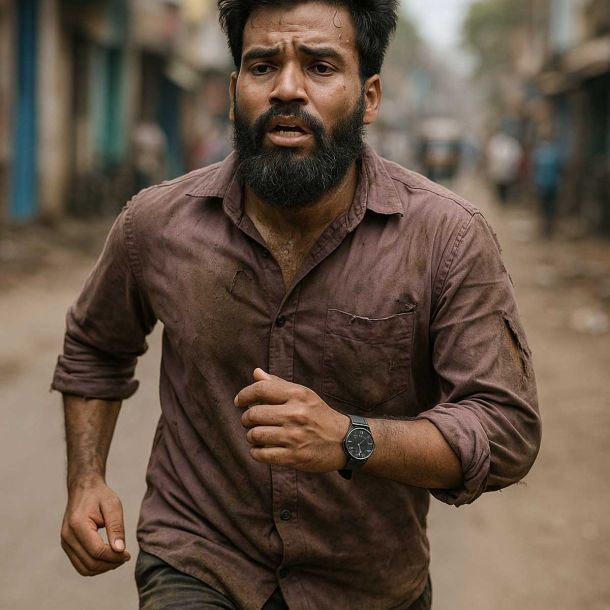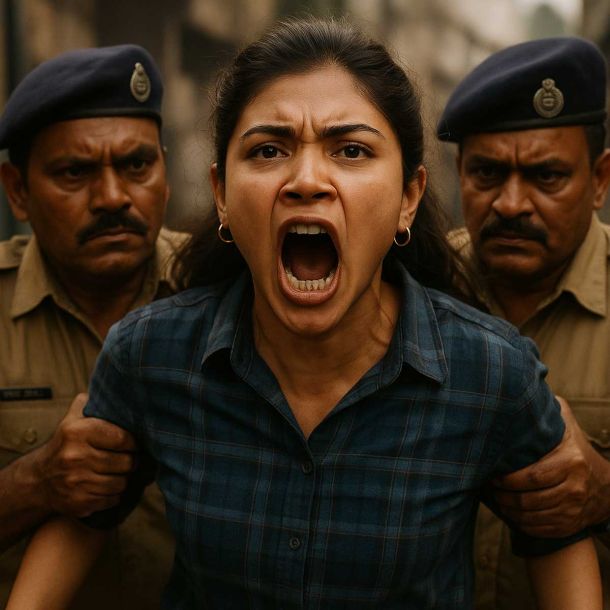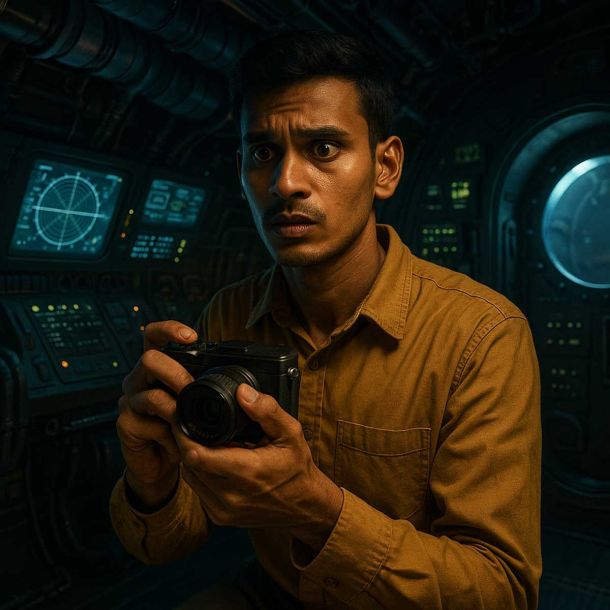More Coverage
Twitter Coverage
Satyaagrah
Written on
Satyaagrah
Written on
Satyaagrah
Written on
Satyaagrah
Written on
Satyaagrah
Written on
Join Satyaagrah Social Media
“Everything you’ve ever wanted is on the other side of fear”: Mula Gabharu, one among phenomenal patriotic women who fought with Mughals for her husband, for motherland, called the people of Assam to fight Mughals by taking Ahom sword in their hands
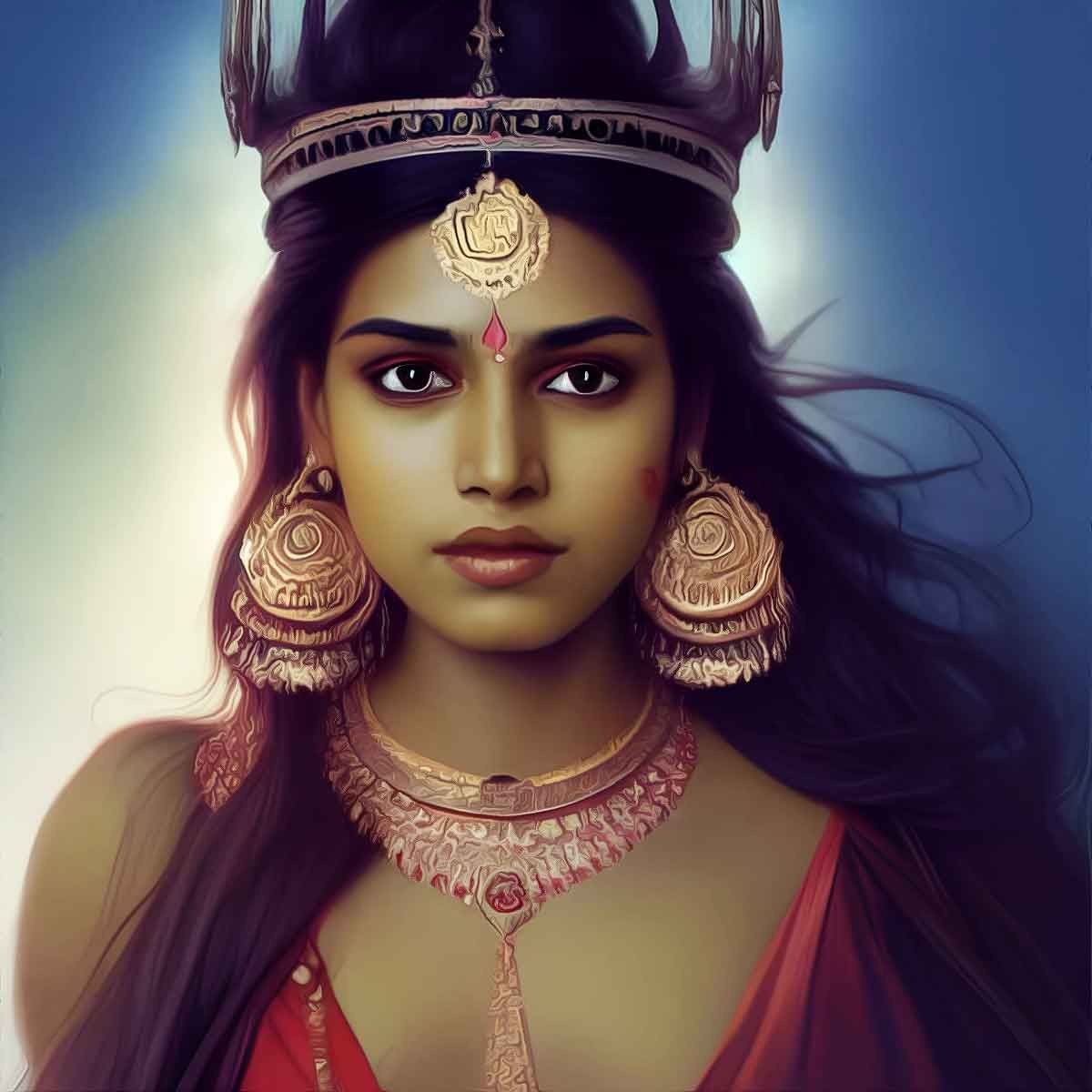
History is very well bizarre. There are many such stories buried in it, which very few people know about. In the same history, there are many such stories of women who gave up everything for her kingdom, her country, her motherland.
|
Mula Gabharu was a lady among these phenomenal and patriotic women. Who fought with the Mughals for her husband, for her motherland. Who called the people of Assam to fight the battle with the Mughals by taking Hengdung (Ahom sword) in their hands. This is the story of the lady of war who fought four days with the Mughals and killed many soldiers. This is the story of Brave Mula Gabharu.
Except few from Assam, not many have heard about Mula Gabharu! She was one of the few warriors who fought bravely on the battlefield against Muslim invaders. She killed two Mohammedan Lieutenants in battle until she was treacherously killed by the enemy on the same battlefield. Like many other unsung warriors of India, she finds no place in Indian History textbooks.
Mula Gabharu (also Nang Mula) was the daughter of the Ahom king, Supimphaa, and the wife of the Borgohain Phrasengmung. She organized women warriors after her husband had fallen in battle against Turbak, an invader sent by the Sultan of Bengal in 1532, and herself fell in the Battle of Kachua. During the battle, women warriors Jayanti, Pamila, Lalita, etc. were the companions of Nang Mula.
The husband of Mula Gabharu was Chao Frachenmung of Ahom. He was the Bargohain of the Ahom kingdom. Therefore he was called Chao Phrachenmung Bargohai. Both loved their motherland very much. Both believed that freedom and patriotism are more important than life. Both of them had also proved this by their work.
The reason for calling Nang Mu-la as Gabharu (young girl)
Many people have a question about how the title of Nang was gabharu (young girl). In fact, the wife of Ahom’s elder officer was called Gabharu. Some people even called them “Gabaru Deu”. Nang, was the wife of Bargohain, that’s why she was also called Nang Mo-la Gabharu or Mula Gabharu.
|
Islamic invaders from Bengal made several attempts to conquer Kamrupa, now called Assam. In 1206, King Prithu of the Khen dynasty which drew their lineage from Narakasura, badly defeated Bakhtiyar Khilji. Khilji was the first Islamic invader to attack Assam. In 1527 A.D., Rukunuddin Rukun Khan, the general of Nasiruddin Nasrat Shah, the Sultan of Bengal invaded Kamrupa only to be defeated by the Ahoms.
Viswa Singha was then the Ahom king of Kamrupa. Hearing about the defeat of Rukun Khan, the Sultan dispatched his general Mit Manik with an army of one thousand horsemen and ten thousand foot soldiers. In this battle, the Ahoms won. Mit Manik was taken prisoner while Rukun Khan fled from the battlefield. The Ahoms captured a large booty including some firearms.
Nasiruddin Nasrat Shah was the son of Ala-ud-din Husain Shah, founder of the Hussain Shahi dynasty in Bengal. Husain Shah usurped the throne of Bengal after assassinating Shams-ud-Din Muzaffar Shah, an Abyssinian Sultan. After his death in 1519, he was succeeded by his son Nasrat Shah. After the failed attempt of invading Assam in 1527, Nusrat Shah again sent a huge army under the commandership of Turbak Khan, an Afghan in 1532 AD.
The Mohammedan army, comprising both land and naval forces, was armed with guns and cannons among other weapons used in battle during that time. According to the book War Drums of Eagle King written by PW Ingty, “The forces led by Turbak Khan were well equipped with sufficient rations and armaments; their soldiers were well trained and seemed unbeatable as they moved steadily on the north bank of the Brahmaputra towards the core of the Ahom-held territories.”
|
Ahom king Suhungmung was then the ruler of Assam. The 14th Ahom ruler, he ascended the throne of the Ahom kingdom under the title of Swarganarayan Dihingia Raja in 1497. Under his rule, the Ahom kingdom expanded beyond the previous borders.
A series of battles between the Ahoms and the Mohammedan forces were fought between 1532 and 1533 AD. The first battle was fought between Turbak and Ahoms at Singri. This battle was commandeered by Suklen, the son of Suhungmung. Suklen was defeated and wounded in this battle. The Ahom forces retreated over to the south bank of the Brahmaputra. The Mohammedan forces followed. Several more battles followed at different places with neither party at the winning end.
In 1533 AD, the Ahom forces in one of these battles were led by Ahom commander Phrasengmung Borgohain. The title Borgohain is the 2nd in rank in the Ahom court of ministers conferred by Sukaphaa, the founder of the Ahom dynasty. Burhagohain was the 1st in rank, conferred by the same Ahom king. Later, Suhungmung added three more ranks, the descending order of which, were Borpatrogohain, Sadiakhowa Gohain, and Marangikhowa Gohain. All of the five ministers were entrusted with supervising certain Ahom territories and of leading armies in battle.
Mula Gabhoru's husband, Phrasengmung, heard that the minister Khunlung and other warriors lost their lives in the hands of Turbak. Mula Gabharu said to Phrasengmung, '[There are] dark clouds in the skies of Assam. To keep the freedom of Assam, [to be] free from the destruction of the enemy, join the war'. Her husband told her, "You are an idol of bravery, whose wife is fearlessness; there will be no fear in his life. Life and death are not bigger than the independence of this country. The shield of self-defense and the weapon of courage is the best shield. During the war, Mulagabhoru gave her hands to her husband and said, "Be able to protect your country, your own son, and your own wealth and honor with these words."
Phrasengmung promised by lighting 101 lamps, a tradition known as Kin Lao, that he will take the determination of protecting his country, son, awards, and honors. The Ahom soldiers, who wore armor, were themselves unbeatable. Phrasengmung did not get the chance to wear his armor and fought without armor.
|
Turbak Khan treacherously killed Phrasengmung Borgohain in battle. The death of the commander demoralized the Ahom forces. After seven days of fighting, the news of her husband's death reached Mula Gabhoru. In mourning, she promised to destroy the murderers of her husband. Like Goddess Shakti, Mula Gabharu immediately set to action, marching towards the battlefield in a horse with a flashing sword in hand, all ready to strike!
Mula Gabharu was trained in the art of warfare. Right from riding a horse on the battlefield to using swords and other arms used in warfare, she was an expert.
To defend her motherland from the Muslim forces and to avenge the death of her husband, Mula Gabharu rode into the large Mughal forces, striking hard on either side as she marched ahead like lightning amid the dark clouds. Many a soldier was slain. The Ahom forces were greatly motivated and inspired by her feat and they fought with renewed vigor. She came face to face with one of the Lieutenants of Turbak Khan. Without much effort, she struck him with her sword and killed him. Mula Gabharu confronted another Lieutenant of the Mohammedan forces. She struck him and killed him too. And then she confronted Turbak. The Afghan commander treacherously killed her. Neither party won.
The Ahoms, now commandeered by Tonkham Borpatra Gohain, another general, made a change in their war tactics. They positioned themselves in such a way so as to cut off all supply and communication lines of the army of Turbak Khan with their homeland and headquarters at Gauda, Bengal.
|
The final battle took place at Duimunisila along the banks of the mighty Bharali (a tributary of Brahmaputra) river a few days later. Tonkham Borpatra Gohain defeated the Mohammedan forces and killed Turbak Khan. In the words of Leslie Shakespear from his book History of Upper Assam, Upper Burmah, and North-Eastern Frontier, the Ahom Raja “sent large reinforcements by land and river. Turbak’s forces were defeated, he himself killed, and his head, as was customary, was sent for burial on Charaideo hill. The beaten and disorganized forces were pursued by the victorious Ahoms through Koch territory to the Karatoya river.”
After Turbak was killed, the Ahom forces of Suhungmung pursued the Mohammedan army till the Karatoya River in present-day North Bengal.
Mula Gabharu’s brave participation in the war and her sacrifice raised the spirits of the Ahom forces to fight for victory. They won. Thus Mula Gabharu won!
- Mulagabharu Girl's MES School was established in 1987 in the name of the great warrior Mulagabharu. The school is situated in Dichow Botua, Sivasagar, Assam.
- People of Assam celebrate Mulagabhoru Day on 29 May every year.
- Every year Tai Ahom Yuva Parishad (TYPA) held a ceremony on Mula Gabharu Day and gives the Birangana Mula Grabharu Award.
Bharat salutes the valor and sacrifice of Mula Gabharu. Jai Hind!
|
References:
- The Brahmaputra Beckons. Brahmaputra Beckons Publication Committee. 1982.
- Gogoi, Debo Prasad; Bora, Prasanta (2011). Role of Ahom Women with Special Reference to Mulagabharu, Jaymati Konwari, and Bar Raja Phuleswari Konwari. Proceedings of the Indian History Congress. Vol. 72(II). pp. 1511–1512. JSTOR 44145777.
- Assamese women in Indian independence movement : with a special emphasis on Kanaklata Barua. Mittal Publications. 2008. ISBN 9788183242332.
- Bīrāṅganā Mūlā Gābharu (1st ed.). Candra Prakāśa. 2011. ISBN 978-9324402257.
- Assam's history and its graphics. Mittal Publications. 2008. ISBN 9788183242516
- Saffron Swords: Centuries of Indic Resistance to Invaders - Manoshi Sinha Rawal, Yogaditya Singh Rawal
 Support Us
Support Us
Satyagraha was born from the heart of our land, with an undying aim to unveil the true essence of Bharat. It seeks to illuminate the hidden tales of our valiant freedom fighters and the rich chronicles that haven't yet sung their complete melody in the mainstream.
While platforms like NDTV and 'The Wire' effortlessly garner funds under the banner of safeguarding democracy, we at Satyagraha walk a different path. Our strength and resonance come from you. In this journey to weave a stronger Bharat, every little contribution amplifies our voice. Let's come together, contribute as you can, and champion the true spirit of our nation.
 |  |  |
| ICICI Bank of Satyaagrah | Razorpay Bank of Satyaagrah | PayPal Bank of Satyaagrah - For International Payments |
If all above doesn't work, then try the LINK below:
Please share the article on other platforms
DISCLAIMER: The author is solely responsible for the views expressed in this article. The author carries the responsibility for citing and/or licensing of images utilized within the text. The website also frequently uses non-commercial images for representational purposes only in line with the article. We are not responsible for the authenticity of such images. If some images have a copyright issue, we request the person/entity to contact us at This email address is being protected from spambots. You need JavaScript enabled to view it. and we will take the necessary actions to resolve the issue.
Related Articles
- Unsung Heroine Pritilata Waddedar, Who Shook The British Raj at the age of 21
- Santi Ghosh and Suniti Choudhury: Two Teenage Freedom Fighters Assassinated British Magistrate
- Our first true war of independence lie forgotten within the fog of time and tomes of propaganda: Sanyasi Rebellion, when "renouncers of the material world" lead peasants in revolt against British and fundamentalist islamic clans
- Add Vedas and review freedom fighter's portrayal in School textbooks: Parliamentary Committee on Education
- "Nak-Kati-Rani": Defying Shah Jahan, Rani Karnavati of Garhwal inflicted unprecedented humiliation on the Mughal army, cutting off their noses; her invincible spirit remain unsung in mainstream history, overshadowing the grand tales of emperors
- Vinayak Damodar Savarkar – A Misunderstood Legacy
- Dangers of losing our identity: Guru Tegh Bahadur forgotten and Aurangzeb being glorified
- Cross Agent and the hidden truth of massacre of Jallianwala Bagh - Martyrdom of Shaheed Bhagat Singh (Some Hidden Facts)
- Jhalkaribai: The Indian Rebellion Of 1857 Who Took on British Forces Disguised as Laxmibai
- Theft on a Grand Scale - Britain stole $45 Trillion from India and lied about it. Indian money developed Britain and Other Countries
- Pt. Madan Mohan Malaviya’s independent ‘Note’ to the Industrial Commission of 1916: India’s Industrial Heritage
- "The relentless pressures of the so-called marketplace have distorted all our history and culture": 'Revolutionaries - The Other Story of How India Won Its Freedom'' by Shri Sanjeev Sanyal says History of India’s freedom struggle must be re-written
- 21-yr-old girl Bina Das shot Bengal Governor in her convocation programme at Calcutta University, got Padma Shri but died in penury
- When Nehru ignored warnings from Sardar Patel and Sri Aurobindo and shocked USA President: Chinese Betryal and loss of centuries old ally
- Godse's speech and analysis of fanaticism of Gandhi: Hindus should never be angry against Muslims


















